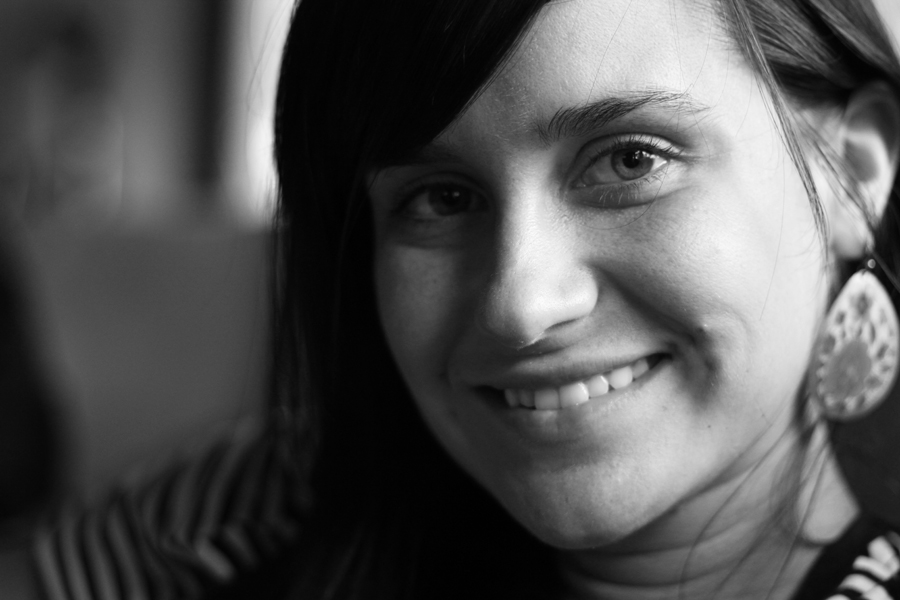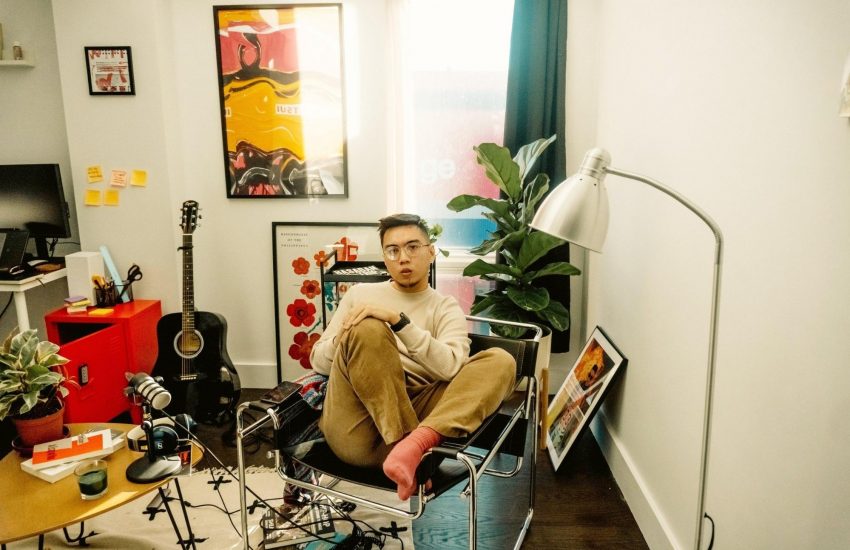Elaine McMillion Sheldon, director of the interactive documentary “Hollow”
This interview with Elaine McMillion Sheldon was conducted by documentary filmmaker and media technologist David Tamés and originally published on Kino-Eye.com, his blog on documentary, new media and video art. Tamés is a digital media instructor in the College of Arts, Media, and Design at Northeastern University.
Hollow is an interactive documentary that examines the future of rural America through the stories of over 30 residents of McDowell County, West Virginia. McMillion Sheldon grew up nearby, right in the heart of coal country, which is at once a highly unique region of America and also representative of other parts of America to suffer through a boom-and-bust economy. The project is also available in a DVD edition for classroom use, along with a study guide.
McDowell County has lost almost 80 percent of its population since 1950 and continues to lose more young people every year because of plummeting opportunities. Despite this rural brain drain, some 22,000 people continue to live and work in McDowell County. Through their stories we learn of their communal pride, sense of belonging and a determination to make the area thrive again.
Ultimately, Hollow is a story of hope, using storytelling in a bid to find potential solutions. Residents from the project were featured in an Op-Doc in The New York Times. A writer for the Huffington Post called Hollow “the most magnificently presented, web-aware journalism I’ve ever seen.”
Here’s Tamés and McMillion Sheldon:
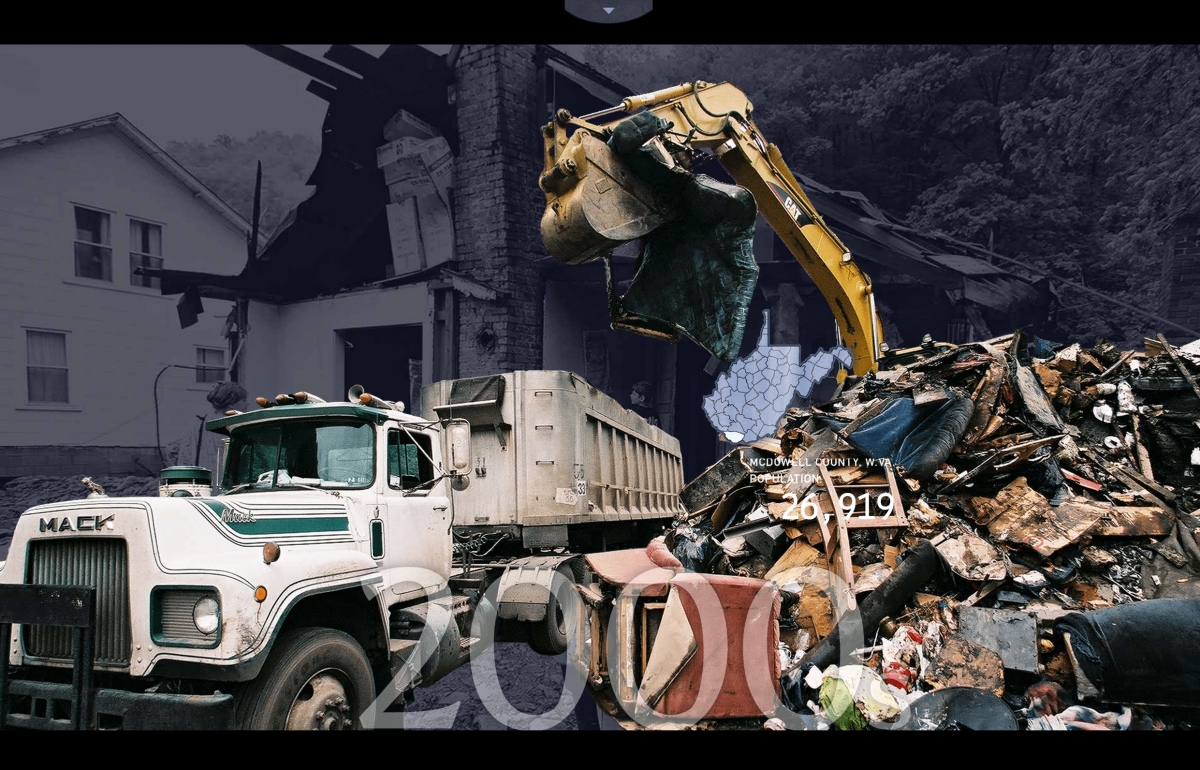
David Tamés: I’m curious about two aspects of Hollow, one is the access that you had, the trust that you developed with your subjects, and your approach to that. The second is why the choice of interactive documentary instead of a linear documentary? I am curious what drove your decision and what surprises you might have encountered along the way. Let’s start with the origins of the project.
Elaine McMillion Sheldon: I had left West Virginia in 2009 and was reading a book called Hollowing Out the Middle: What Rural Brain Drain Means for America, it’s a sociological study about this town that was at the epicenter of the brain drain, young people leaving the community. And that inspired me to get my hands on some documents and some numbers about my own state and the struggle that they had with people like myself leaving. And so I was inspired in the beginning to make some type of linear documentary. I really didn’t know at first what this is going to be, but I knew I wanted to explore this issue. And so when I went to McDowell in 2011, it just became really clear that this could not be a tightly wrapped up in a feature-length film. This had to be something to help build trust in the community.
Tamés: And thus this had to be something that the community participated in the ongoing creation of?
McMillion Sheldon: Yes, and it had to be something that used both qualitative and quantitative data in an interesting way and something that allowed this town to keep their story ongoing because I think my fear was, if I come in and make this film about this place that’s obviously in decline, what are we saying? If this film has an end, does the town’s story also have an end? And it really doesn’t because it changes every day. And so what we were hoping through interactive media and online media is to encourage people to get involved and to not just settle with the idea that the town is dying, but try to encourage people to work together.
Tamés: How did you determine the form it would take?
McMillion Sheldon: I didn’t know what form or shape that would take. I just knew I wanted it to be accessible online. I wanted it to be a story that grew over time. I knew I wanted it to be videos, photos, data, all these different things.
Tamés: As the project grew, how did the project transform, not just in terms of crew but how you worked with the community?
McMillion Sheldon: The process of making Hollow what it is today was a huge team effort between me as a storyteller and my designer and architect Jeff Soyk who crafted and choreographed pieces with my footage and with my photographs and sound to help make this a unique experience rather than one that’s similar to other websites out there where media has distorted, and we wanted to make it more cinematic. So in the process of building trust, when I first went down to McDowell, that was in 2011. I spent quite a bit of time, almost close to half a year building trust from afar and making small trips down, just trying to get to know people, and not pulling out my camera the first thing, but just getting to know them, getting to know what they care about, and sort of what roles they serve in the community. And so in May of 2012 it was still that trust building, but I went down there until September 2012 to shoot.
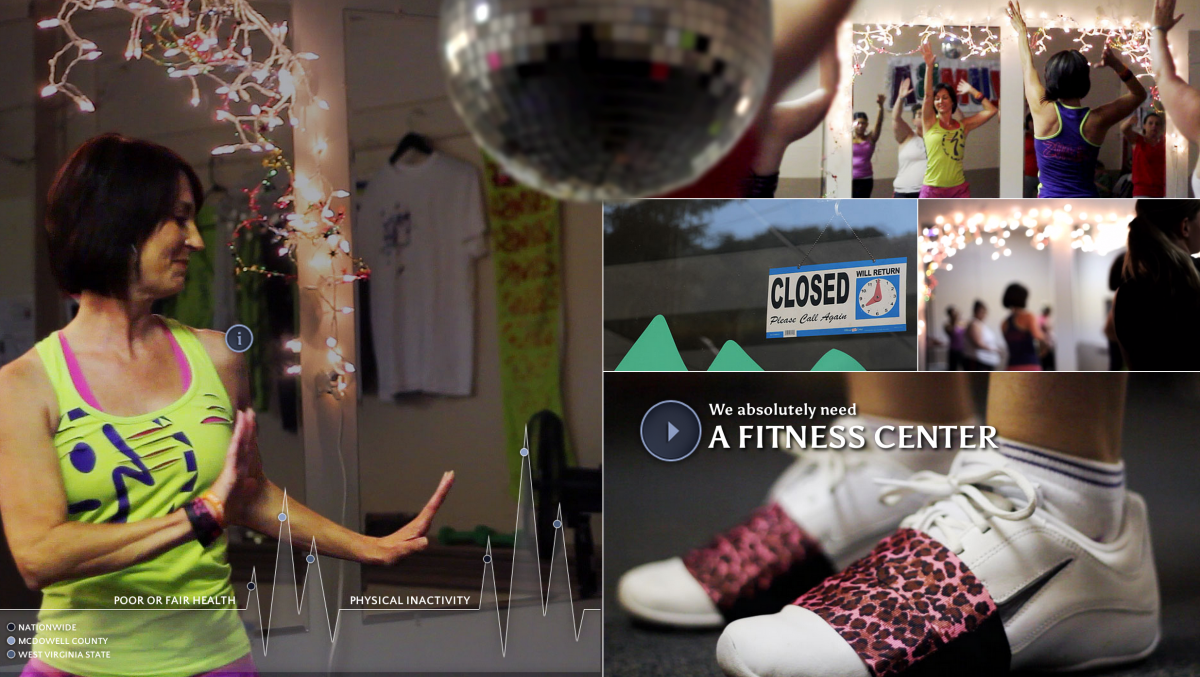
And I created a community advisory board of five individuals in the county that I had made pretty good contacts with. They each represented a portion of the community, whether it was history, or art, or youth. Every time I interviewed someone, they would give me a list of five or ten people that I could then interview again or interview new people. I made over 200 calls to have people sit down with me and chat and just talk with me, and only about 75 actually wanted to talk with me. It wasn’t like the whole community embraced it, we had a really strong core community, but still there was a lot of suspicion around any type of media project in that county because they make the headlines every month. There was a three-part series in Al Jazeera in which McDowell County was the feature of the worst place on the planet for drug abuse, drug overdose, and poverty. The New York Times published an article where they compared life in McDowell County to the lifespan in Iraq. They are used as this poster child for all things negative. So they’re pretty distrustful to anyone with a camera. And so the community advisory board helped and I was there just constantly. It was just a matter of just being there, never leaving, and showing up at every possible event, even when you’re not invited, and just being present.
Tamés: What were you doing differently than the fly-in, fly-out journalists in order to build trust and engage the community as participants in your project?
McMillion Sheldon: During production we had a meeting every month we invited people to that we called a workshop, I think it was two or three hours. We rented the high school and had people come for training in how to shoot a video or shoot photos, and we also did screenings of the stuff that I was shooting to get feedback. In our first workshop participants identified the themes that were important to the community story. They helped us shape the stories that we ended up telling. This process helped to create a tight-knit group around this project. So when it launched, it really felt like a piece of ownership. They not only contributed through video, but they’ve contributed through the major arcs of the story and all the themes they came up with.
Tamés: Something I particularly like about Hollow is that it presents the perspective of an observational filmmaker along with the perspective of the community. It’s evident that your process was highly participatory. By any chance do you come from a sociology or anthropological background?
McMillion Sheldon: No, I come from a background that is not participatory whatsoever, and that’s journalism. I studied a very traditional form of news editorial journalism, newspaper writing, my professors would discourage this type of thing where the community knows best how to tell their story. So I think it was a revolt for me away from journalism and into a more open-arms type of media collection where we were considering the fact that I’m not from there and I can’t just parachute in and tell the story better than people who have lived there their entire lives. And so we really wanted to make a different type of project. I’ve never done any participatory work before, it was all new for me.
Tamés: So you as a filmmaker become more of an orchestrator than just the storyteller?
McMillion Sheldon: Yes, you definitely have to become a facilitator, which has its downfalls because it’s enough work to document as a filmmaker, but when you’re facilitating and making sure people have what they need to tell their story and putting out all these fires all over the place, it was a hectic time. We had a great team in Boston with Jeff, the designer, and two developers and I had two video editors helping me as well as a sound designer. I was the only filmmaker on the ground for a majority of the time, I had a couple of friends that would come down on weekends and throughout the week, but you know, I was mostly shooting alone, however, I did have great help during the workshops. Everybody was faithful coming down and running the workshops. So I never did the workshops alone. It’s a new way of handling things and definitely adds twice as much work to an already pretty heavy load.
Tamés: I see how this interactive documentary made in a participatory manner goes way beyond traditional documentary in terms of not only the scale of work involved in the field, but you also have a website that’s quite complex. How did you go about finding and choosing your designer and your developer?
McMillion Sheldon: The team just sort of came together. I was really lucky. It was friends of friends. And Jeff Soyk, the designer, who is extremely talented, he and I were both students in Emerson’s MFA program. And while we never really worked on a project together, I knew that he had worked in advertising and design before. Jeff originally came on to help with branding design but ended up playing a much larger role. And then Russell Goldenberg, the developer, was a graduate of Emerson’s visual media arts MFA program and I met him there. Robert Hall, our senior technologist, was a friend of someone who graduated from Emerson. It was really a lot of Boston and Emerson connections. Now that I’m moving on to other projects, it’s very difficult to find developers and designers to work with, so I feel really, really lucky that I had such a good team that was devoted, especially because we didn’t have the budget that a lot of other interactive documentaries have had.
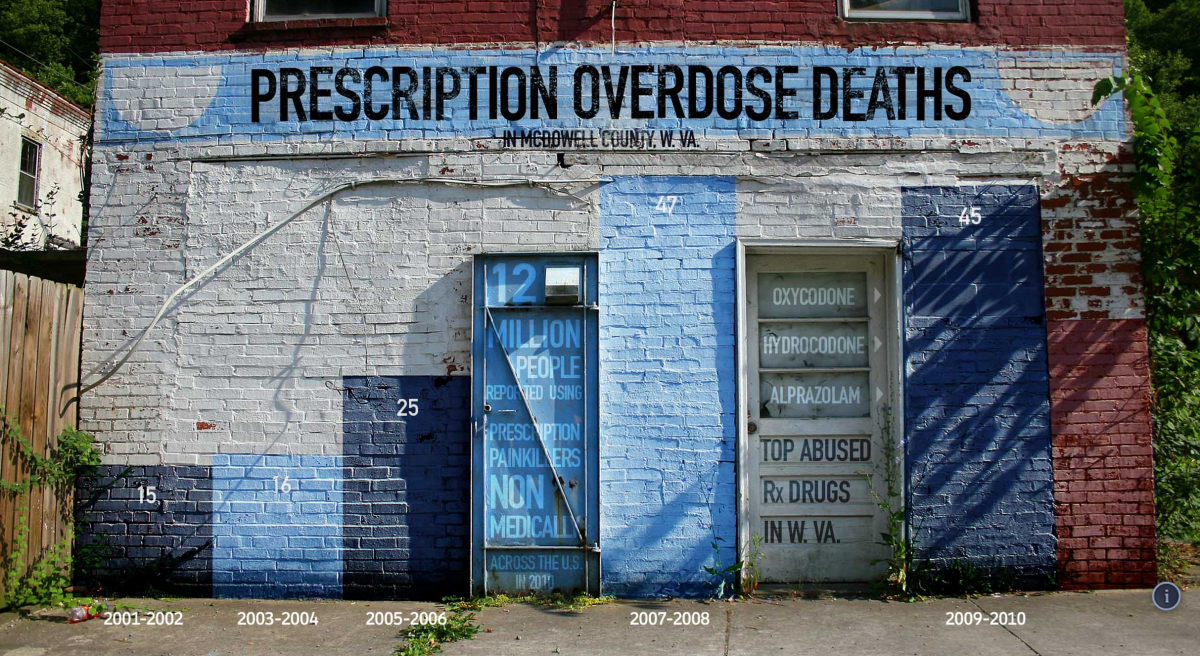
Tamés: What was your budget on this project?
McMillion Sheldon: We made Hollow for less than $130,000. Compare that to Fort McMoney, which is way different than Hollow, but still, I think it had an $800,000 budget. You may want to look into that. So we were working with a very limited budget. None of us had ever worked on an interactive documentary before, it was all new and that made it fun, but it’s difficult to connect with designers and developers because you find someone who is interested but you can’t get the funding to pay them. It’s a tough situation because software development is a very expensive craft. And you have to be prepared to not just hire designers and technologists but you also need to figure out how to sustain a project like this. Hollow costs $730 a month to keep up and running on a website because we have a private server with Amazon. And so there’s a huge sustainability issue with projects like Hollow that are custom built and don’t use YouTube and Vimeo and Tumblr and all these other existing platforms. We had to custom build it, and now we have to maintain our server costs.
Tamés: How are you going to maintain Hollow in the future?
McMillion Sheldon: We’re working with the university to actually get it on their server. So it will be part of their library collection. That’s where it will live for the rest of its life, hopefully. You have to think about sustainability in the budgeting process. You have to budget for two years after your project and not just for travel and film festivals, like you do for other types of projects, but actual maintenance of the site.
Tamés: So for a filmmaker who’s considering their first interactive documentary project, what would you like to share with them? Given the traditional documentary maker who’s thinking about this interactive component, which at first seems foreign and mysterious and developers speak a different language and come from a very different culture, what are your suggestions for somebody who’s trying to enter into this brave new world?
McMillion Sheldon: I think you have to be pretty honest with yourself on why you want your project to be interactive. You have to answer the question why your project is supposed to be interactive rather than linear. If you don’t have at least three good reasons why your project is better told in interactive form than another form, I’m actually discouraging of it because you can make a website and you can do a lot of interesting things with extra footage on the web and things like that. To devote so much time to an interactive piece, it has to be treated the exact same way as you’re editing your film. It should have equal weight. And so my suggestion is to really nail down the objectives and goals of why this is an interactive piece because you can reach a new audience with this type of media and you can also create call to actions and things like that. They’re all really helpful, but I would recommend thinking about those things because they’ll all find you partners.

Tamés: So what might characterize a project that’s appropriate for the interactive form?
McMillion Sheldon: If you ask yourself why should this be an interactive piece, and you say, well, it’s an ongoing story that’s changing and there’s this political decision made around it and we think that we can mobilize people if we have this on mobile devices and something that people can contribute to, well, that’s great. But what that answer will do is lead you to other people that could help you pull this off.
Tamés: Anything else you want to add, what else is important to think about?
McMillion Sheldon: My biggest advice is don’t try to do it alone because there’s definitely nonprofits out there and funders out there that are less traditional but are interested in getting involved with social issue types of things, and they would love to partner. I would also recommend applying to hackathons where you can actually meet people and test your idea. And you apply with an idea, and they pair you up with a developer or a designer. I think that that’s always a good experience to go through.
Tamés: There are several development frameworks out there you could have used, however, you decided you needed to develop your own code from scratch in order to implement the system you imagined.
McMillion Sheldon: Right. Someone’s going to come up with a really good framework, and they’re going to make a lot of money from it. We didn’t build Hollow to be a platform that was going to be reused. I mean, it’s a totally different way of developing something is to build something that is meant for others to use. But I think it’s just a matter of time before someone comes out with a platform that allows people to tell interactive stories easier. There’s plenty of plug-ins like Popcorn JS and other things that allow you to use these tools, but you still need a developer. So I’d look at universities and colleges and talk to professors who teach in the technology departments and ask them “who’s your most talented student” and see if they’re interested in working on projects. There’s a number of ways you could go about it, but it’s tough. It’s very tough.
Tamés: I’m curious, at a high level, what were the frameworks and tools that you ended up using to develop the Hollow web site?
McMillion Sheldon: Hollow is built using node.js and NoSQL, a database technology including MongoDB for data visualizations and interactive development. And then of course, we pull in APIs from Google, Instagram, and Twitter.
Tamés: What did you learn from the web development aspect? What stood out for you as a documentary filmmaker working with developers?
McMillion Sheldon: One of the things that I wasn’t aware of when we were started is how much trouble it would be to get it to work on multiple browsers. We’re strictly a Chrome experience, it also works on Safari, but there are some issues with looping video and looping audio and autoplay and video file formats and different things that you have to consider when you go across browsers like Firefox and Internet Explorer. Since we actually didn’t have the budget for cross-browser development for launch. We tried to raise some money afterwards but couldn’t really get up the steam. So that’s something else to remember, I would recommend projects that focus on more of a trans-media approach where you have a mobile experience, you have a tablet experience, and you have the website experience because Hollow doesn’t have a tablet or phone experience and that’s problematic, but it’s all things that I wasn’t aware of going into the project, that we’d have to have fully different development for all the different platforms. And so we didn’t budget for it.
Tamés: You’ve certainly been in quite the pioneering mode, and the tools are changing rapidly and developing as we speak, but you just have to use what’s available when you start your project and simply make the best of it.
McMillion Sheldon: Right. Absolutely.
Tamés: What are you working on now? What’s next for you?
McMillion Sheldon: I am working on a couple of short films. I am thinking about starting another interactive project, now in preproduction, that I’d like to launch next year, and I’ve been screening Hollow nonstop. That’s another thing I should talk about, I’ve been doing universities and high schools and different things that have been paying our server costs, either $500 to $700 to pay for a server cost for us to come and screen or for me to come and screen and talk about Hollow. And so that’s one of the ways that we’ve kept the website going. And so I’ve done a crazy number of screenings for a free website that’s accessible online, people to want to come into a room and screen it on a big screen. People love it and it’s great and it’s a pretty interactive experience where I let the audience choose a lot of what we watch, and they get to add some content to the discussion and things like that. This is really time consuming. I also produced two OpDocs for The New York Times.
Tamés: What are the OpDocs about?
McMillion Sheldon: I did one on Seamus Heaney, the Irish poet who passed away back in December, and then I did one the day that we launched Hollow, which was one way that we drove people to the site. So I’m doing a lot of smaller shorter-form projects until I decide what exactly I want to land on next because it’s kind of difficult, considering Hollow was a total fashioned project. And so I’m not ready to abandon it and move on, especially with it being so interactive and ongoing, there really is no end point with these types of projects.
Tamés: Hollow has received a lot of attention and accolades, including a Peabody Award, I think you and your collaborators have made a major contribution to the evolution of interactive documentary.
McMillion Sheldon: It’s crazy and just insane that an independent project like ours is next to all these great networks and corporations that are creating projects for much larger budgets than we are. It’s a huge honor. I got a tweet from our senator, Joe Manchin saying congratulations. And so I decided to seize the opportunity and ask him if he would be willing to host a screening and discussion with all of our representatives in West Virginia with the film. And to me that feels like the stuff with the community is going to be ongoing. They still have the tool that they update their stories and that type of thing. But to me that would feel like a really appropriate screening finale where we’re taking these stories from this area that really is ignored in a large part by state, local, and national politicians and putting it at the center in Washington, D.C. and having them come up and be able to have a forum. So that would be amazing. And so that’s sort of my goal right now. We’ll see how it all goes.
